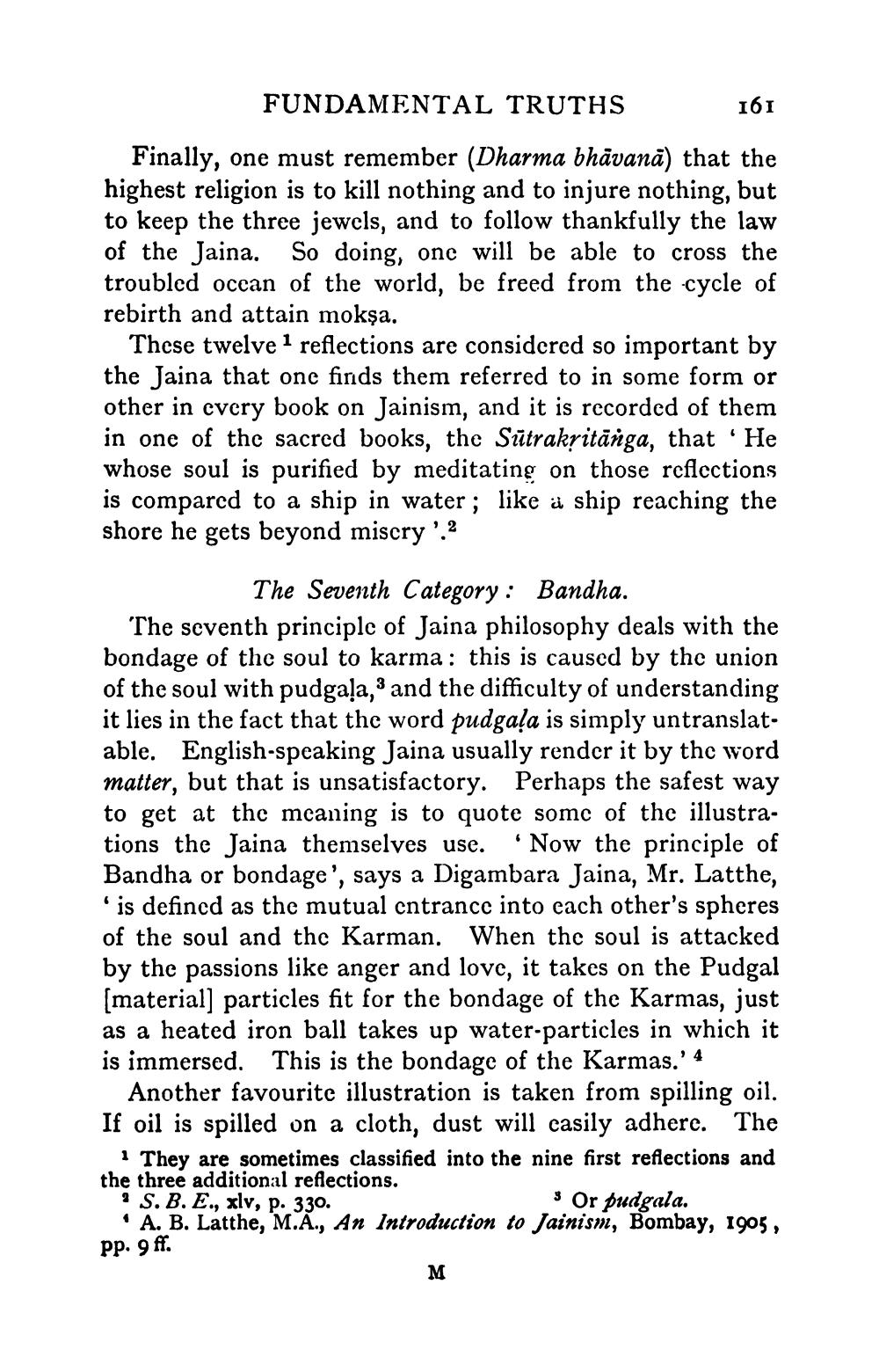________________
FUNDAMENTAL TRUTHS 161 Finally, one must remember (Dharma bhāvanā) that the highest religion is to kill nothing and to injure nothing, but to keep the three jewels, and to follow thankfully the law of the Jaina. So doing, one will be able to cross the troubled ocean of the world, be freed from the cycle of rebirth and attain mokşa.
These twelve 1 reflections are considered so important by the Jaina that one finds them referred to in some form or other in cvery book on Jainism, and it is recorded of them in one of the sacred books, the Sūtrakṣitānga, that 'He whose soul is purified by meditating on those reflections is compared to a ship in water; like a ship reaching the shore he gets beyond miscry'.?
The Seventh Category: Bandha. The scventh principle of Jaina philosophy deals with the bondage of the soul to karma: this is caused by the union of the soul with pudgaļa, 3 and the difficulty of understanding it lies in the fact that the word pudgala is simply untranslat. able. English-speaking Jaina usually render it by the word matter, but that is unsatisfactory. Perhaps the safest way to get at thc mcaning is to quote some of the illustrations the Jaina themselves use. "Now the principle of Bandha or bondage', says a Digambara Jaina, Mr. Latthe,
is defined as the mutual cntrance into each other's spheres of the soul and the Karman. When the soul is attacked by the passions like anger and love, it takes on the Pudgal (material] particles fit for the bondage of the Karmas, just as a heated iron ball takes up water-particles in which it is immersed. This is the bondage of the Karmas.' 4
Another favourite illustration is taken from spilling oil. If oil is spilled on a cloth, dust will casily adhere. The
· They are sometimes classified into the nine first reflections and the three additional reflections. ? S.B.E., xlv, p. 330.
3 Or pudgala. * A. B. Latthe, M.A., An Introduction to Jainism, Bombay, 1905, pp. 9 ff.
M




